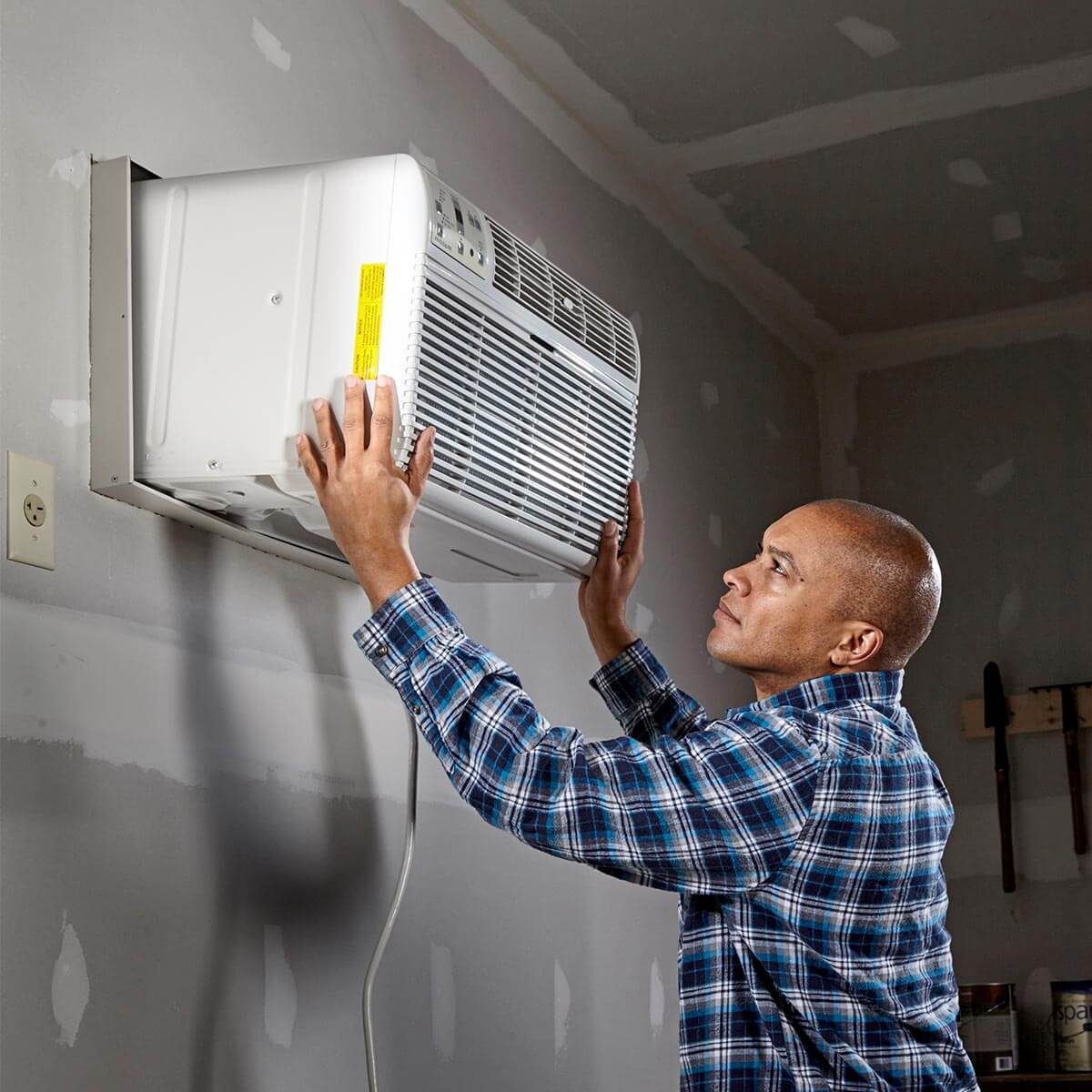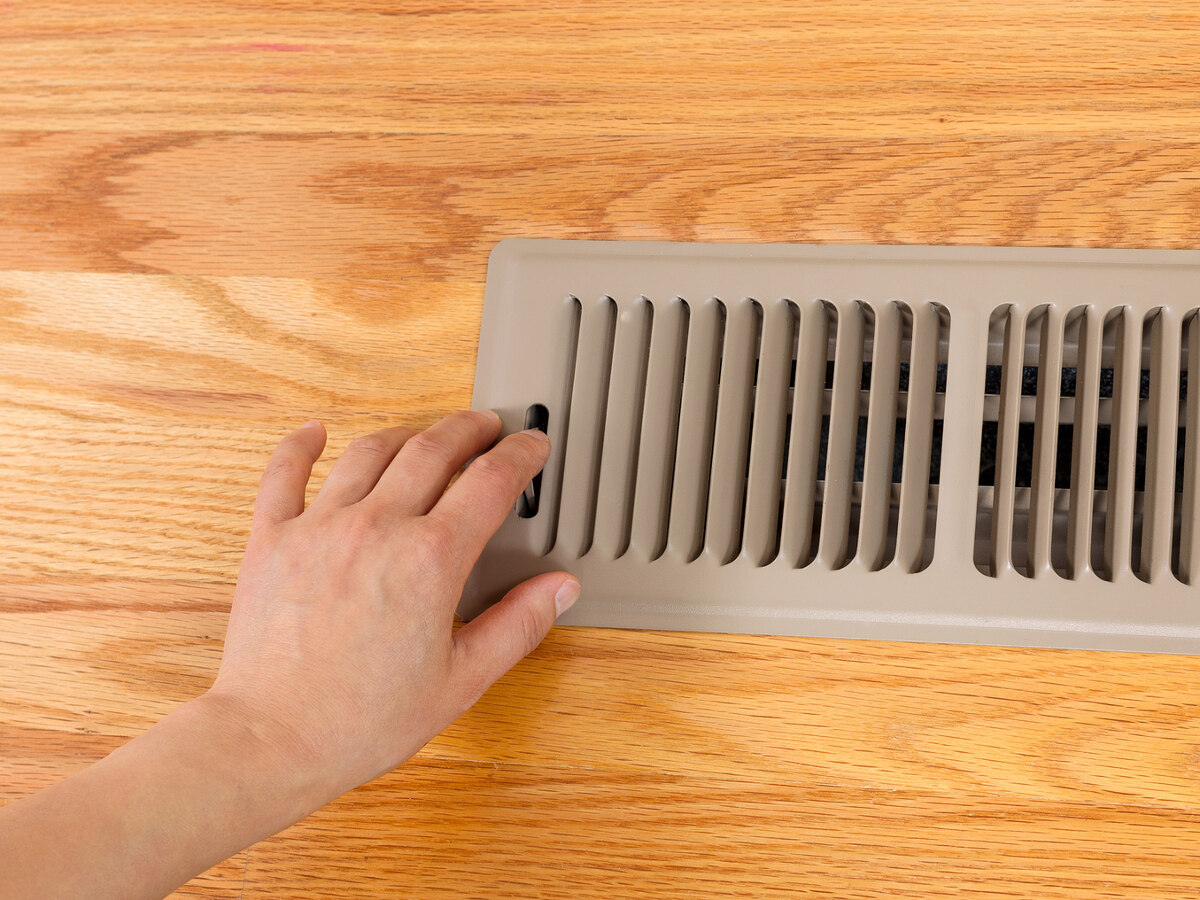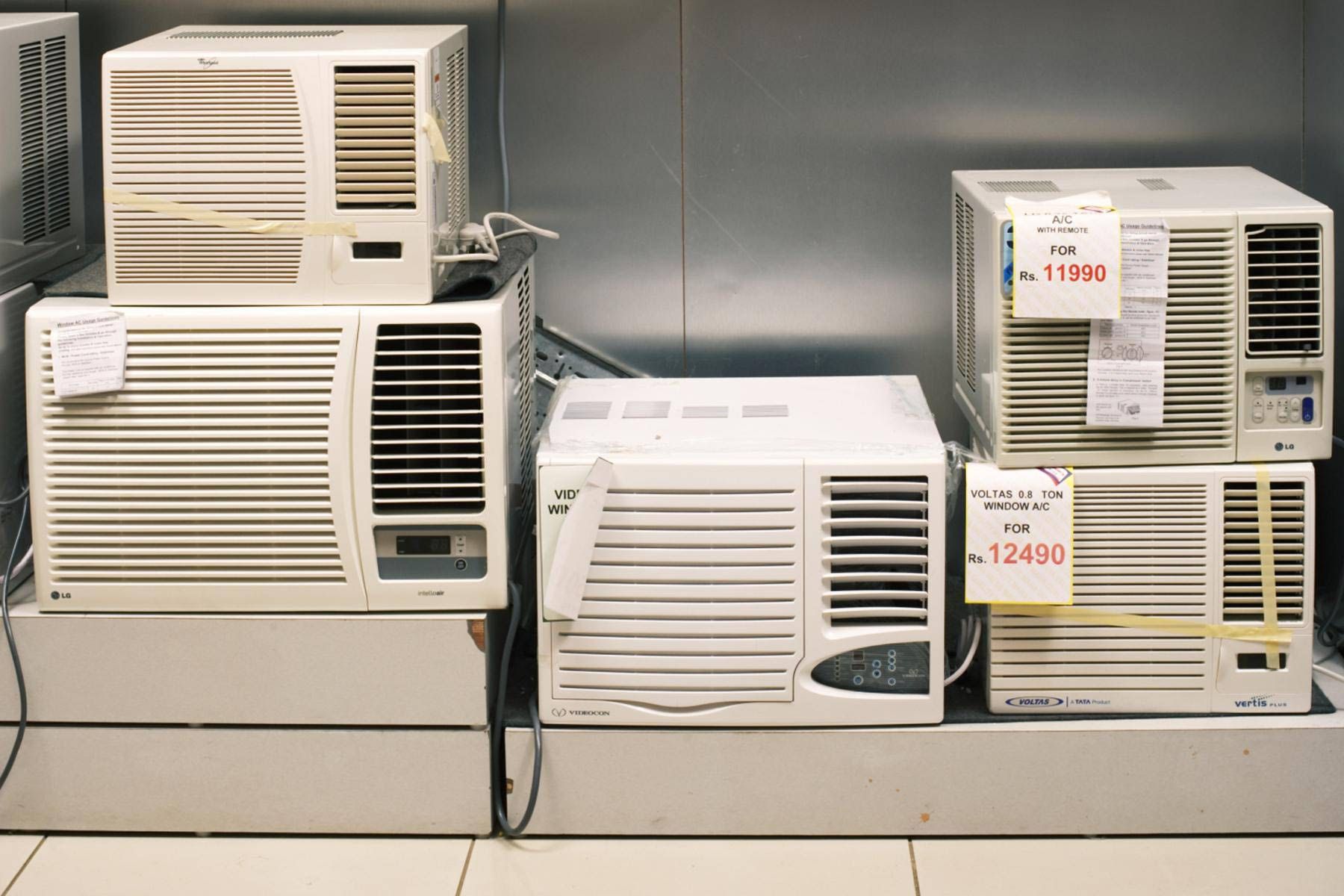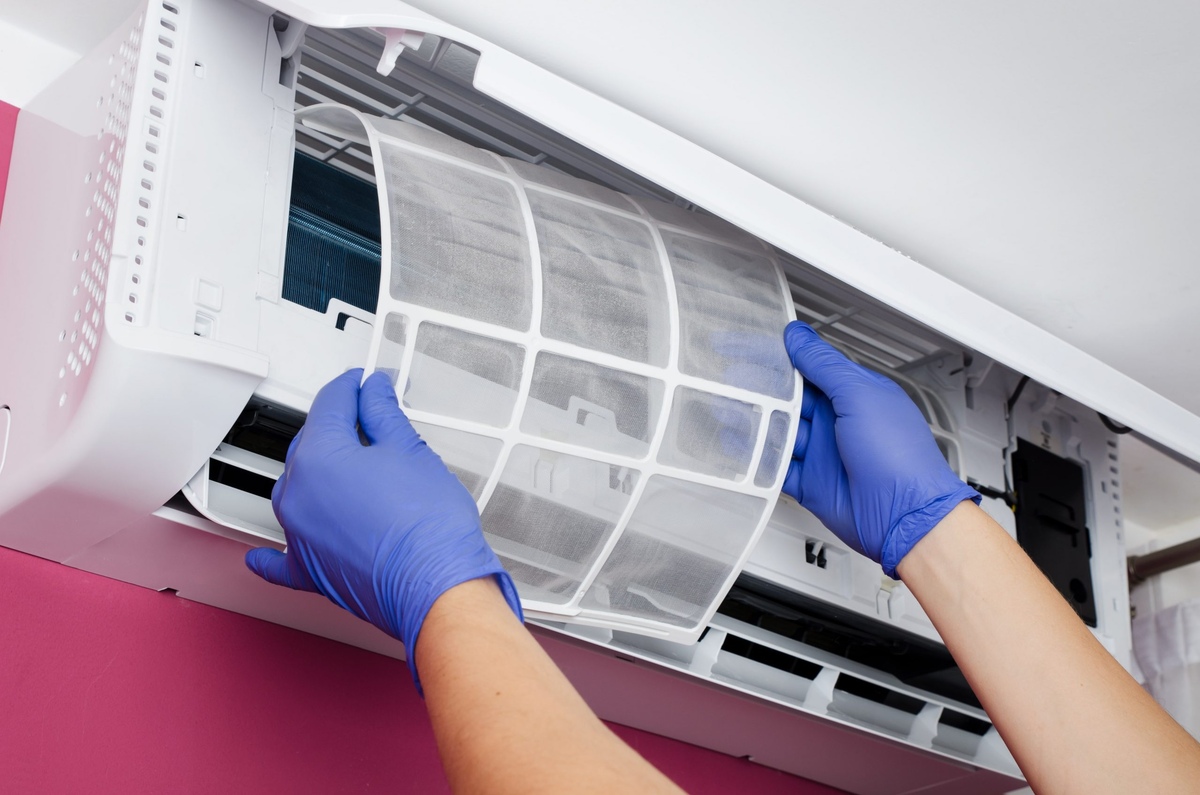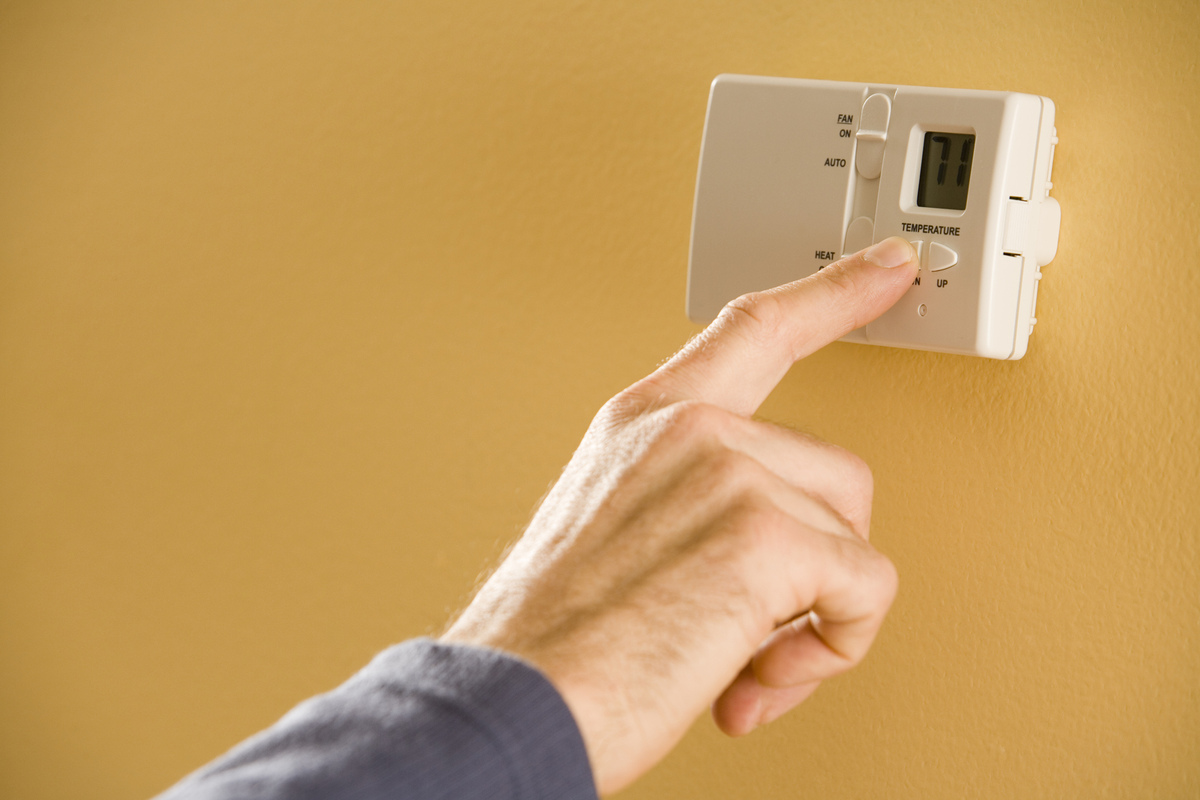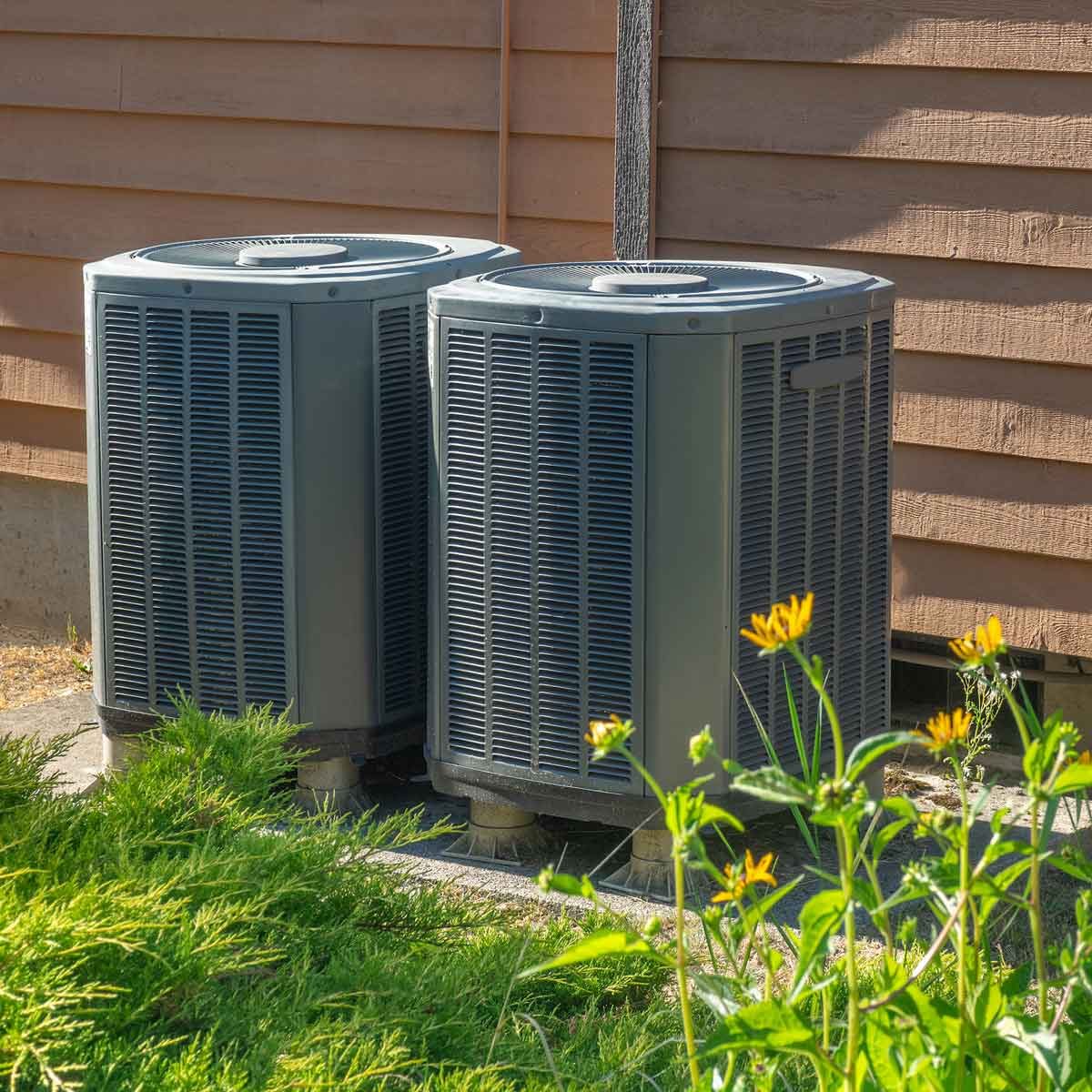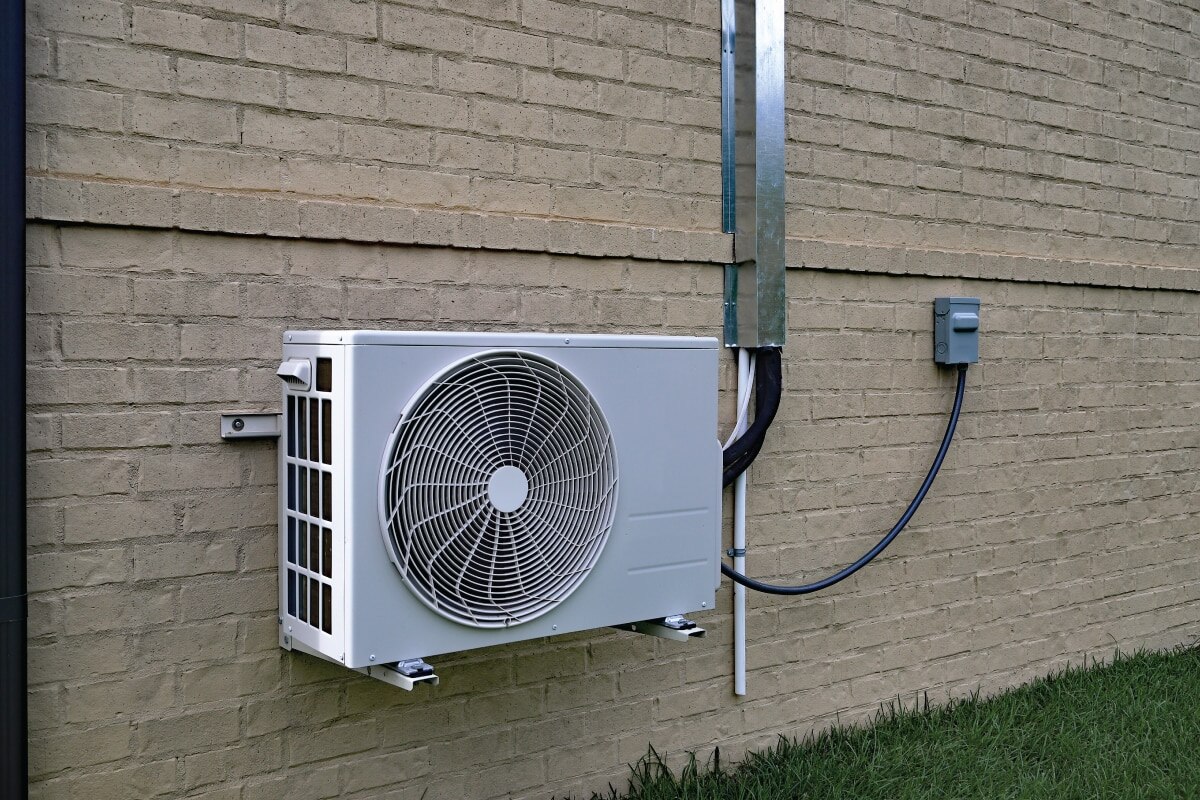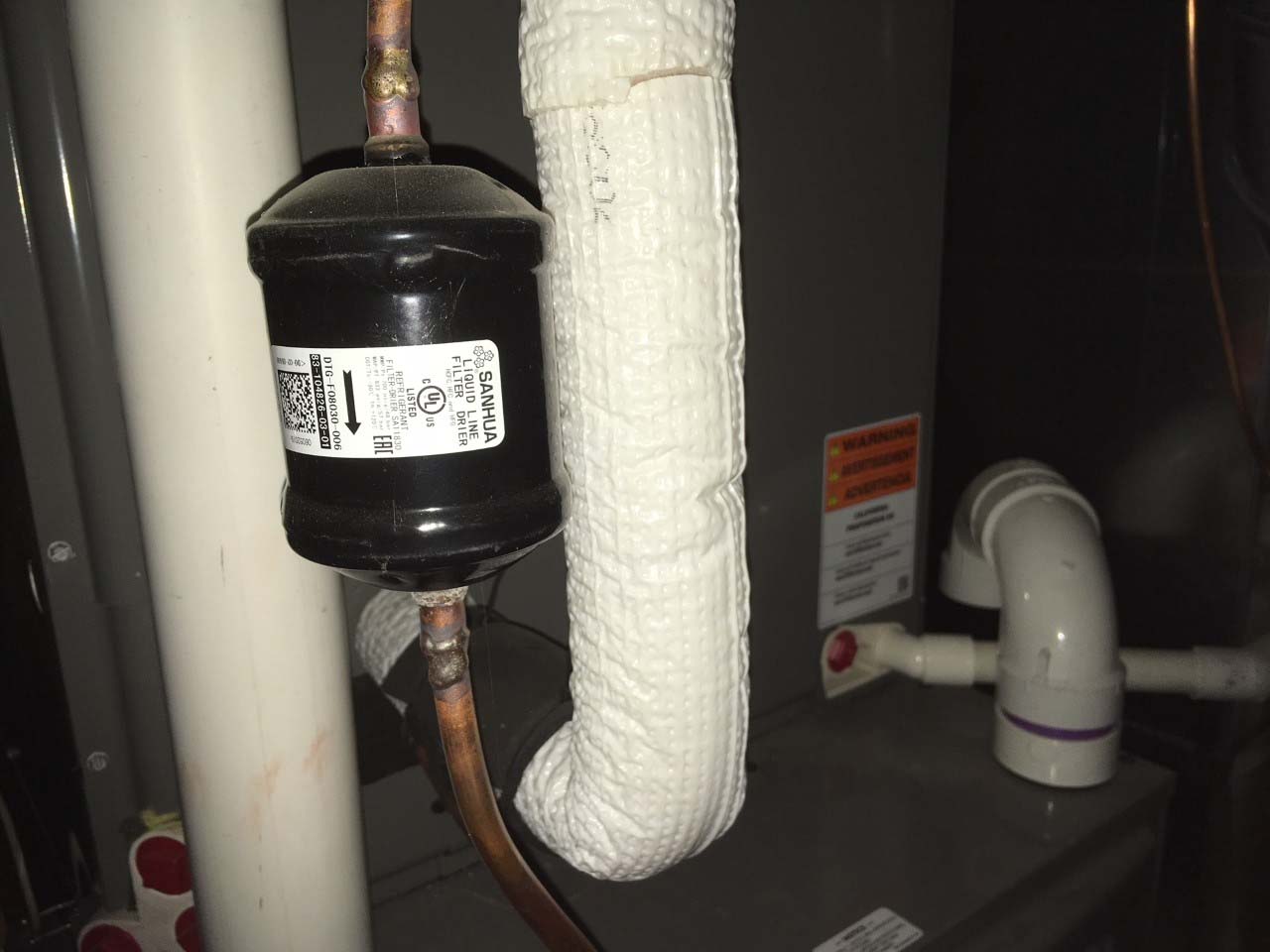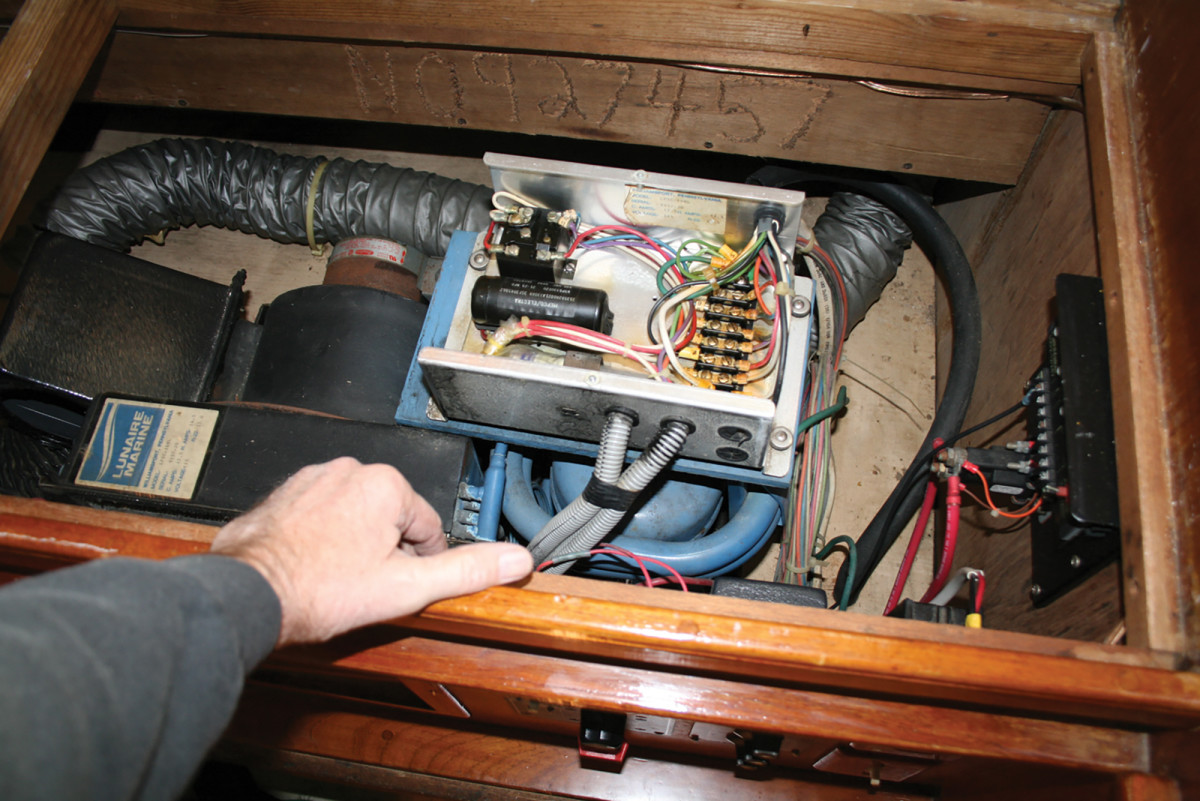Home>Home Maintenance>How Is Air Conditioning Powered
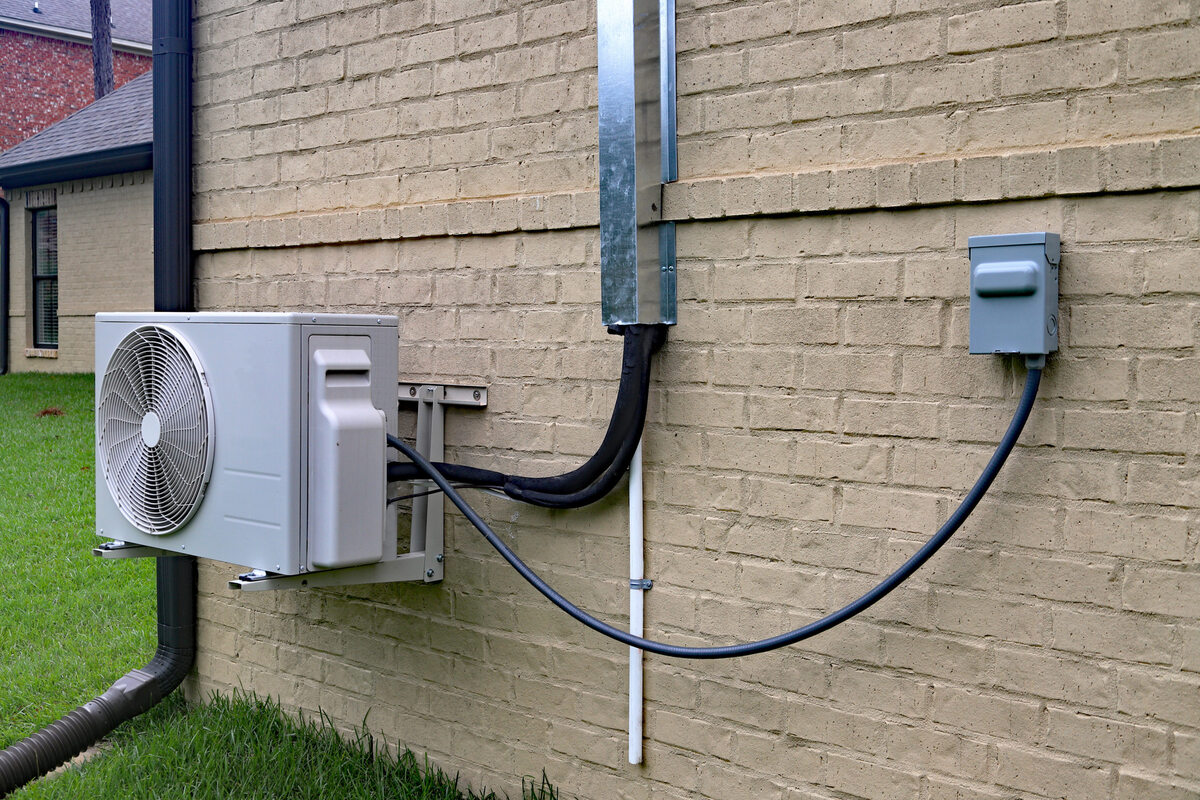

Home Maintenance
How Is Air Conditioning Powered
Modified: March 6, 2024
Discover the power behind air conditioning systems in this comprehensive guide. Learn how home maintenance plays a vital role in keeping your AC unit running efficiently.
(Many of the links in this article redirect to a specific reviewed product. Your purchase of these products through affiliate links helps to generate commission for Storables.com, at no extra cost. Learn more)
Introduction
When it comes to keeping our homes cool and comfortable, air conditioning systems play a vital role. Whether in the scorching heat of summer or the humid days of monsoon, air conditioning provides much-needed relief and creates a pleasant indoor environment. But have you ever wondered how these air conditioning systems are powered? In this article, we will explore the various power sources that fuel these cooling machines.
Air conditioning technology has come a long way since its inception. With advancements in engineering and the growing demand for energy-efficient appliances, today’s air conditioning systems are not only more powerful but also more sustainable.
Understanding the different power sources that drive air conditioning is essential not only for homeowners but also for those considering the installation of an air conditioning system. By choosing the right power source, you can ensure optimum performance, cost-effectiveness, and eco-friendliness.
So, let’s dive into the basics of air conditioning and explore the power sources that keep these systems running smoothly. Whether you’re a homeowner looking to upgrade your cooling system or simply curious about the technology, this article will provide you with valuable insights.
Key Takeaways:
- Air conditioning systems are powered by electricity, solar power, geothermal energy, and backup options like batteries and generators. Each power source has its own benefits, offering sustainable and efficient cooling solutions for homes and businesses.
- Solar power and geothermal energy are eco-friendly alternatives for powering air conditioning systems, reducing reliance on the grid and lowering energy costs. Backup options like batteries and generators ensure continuous operation during emergencies or in regions with unreliable power grids.
Read more: How To Air Condition A Shed
The Basics of Air Conditioning
Before delving into the power sources for air conditioning, let’s first understand the fundamentals of how these systems work. Air conditioning works by removing heat and moisture from the indoor air, creating a cool and comfortable environment.
The main components of an air conditioning system include a compressor, a condenser, an expansion valve, and an evaporator. These components work together to transfer heat from inside the building to the outside, resulting in cool air circulating indoors.
The process begins with the compressor, which is typically powered by electricity. The compressor pressurizes the refrigerant gas, causing its temperature to rise. This hot, pressurized gas then flows into the condenser, where it releases heat to the outside environment and condenses into a liquid state.
The liquid refrigerant then passes through the expansion valve, which reduces its pressure, causing it to evaporate. As it evaporates, it absorbs heat from the air around the evaporator coil, cooling the indoor air. The cool air is then circulated back into the building, while the refrigerant returns to the compressor to restart the cycle.
It’s important to note that air conditioning systems require a constant supply of power to operate efficiently. The power source determines the system’s energy consumption, cost-effectiveness, and environmental impact.
Now that we have a basic understanding of how air conditioning works, let’s explore the different power sources that can be used to fuel these systems and keep our homes comfortably cool.
Types of Air Conditioning Systems
Air conditioning systems come in various types, each suited for different spaces and cooling requirements. Understanding the different types can help you determine which system is the best fit for your home or office. Here are the most common types of air conditioning systems:
- Split System Air Conditioners: Split systems consist of two main units: an indoor unit that blows cool air into the space, and an outdoor unit that houses the compressor and condenser. These systems are ideal for cooling individual rooms or small areas.
- Central Air Conditioning: Central air conditioning is a whole-house cooling system that distributes chilled air throughout the entire building via a network of ducts. It is commonly used in larger homes or commercial spaces where consistent temperature control is required.
- Window Air Conditioners: Window AC units are self-contained systems that are installed in a window or a slot in the wall. These systems are convenient and suitable for cooling small to medium-sized rooms.
- Portable Air Conditioners: Portable AC units are versatile and can be moved from room to room. They typically consist of a single unit with a vent to exhaust hot air. These systems are great for temporary cooling or for spaces where window installations are not possible.
- Ductless Mini-Split Air Conditioners: Similar to split systems, ductless mini-splits have an outdoor unit and one or more indoor units. However, they do not require ductwork, making them more flexible for installation. These systems are ideal for cooling individual rooms or areas without the need for ducts.
Each type of air conditioning system has its advantages and considerations in terms of cost, efficiency, installation requirements, and maintenance. Choosing the right system depends on factors such as the size of the space, existing infrastructure, budget, and specific cooling needs.
Now that we have explored the different types of air conditioning systems, let’s move on to the various power sources that can be used to run these systems effectively and eco-consciously.
Power Sources for Air Conditioning
Air conditioning systems require a continuous and reliable power source to function efficiently. Let’s explore the different power sources commonly used to power air conditioning systems:
- Electrical Power: Most conventional air conditioning systems are powered by electricity from the grid. These systems rely on the electrical supply to operate the compressor and other components. While electricity is readily available in urban areas, it can be expensive and have an environmental impact depending on the energy source.
- Solar Power: With the rising demand for renewable energy, solar power has become a popular option for powering air conditioning systems. Solar panels convert sunlight into electricity, which can be used to run the system. Solar-powered air conditioning reduces dependence on the grid, lowers energy costs, and helps reduce carbon emissions.
- Geothermal Power: Geothermal energy taps into the Earth’s natural heat for cooling purposes. Geothermal air conditioning systems use the stable temperature of the ground to exchange heat, making them highly energy-efficient. While geothermal systems require an initial investment for installation, they offer long-term energy savings and have minimal environmental impact.
- Batteries and Generators: In regions with unreliable power grids or during power outages, batteries or generators can be used as backup power sources for air conditioning systems. Batteries store electricity, allowing the system to continue operating when there’s no grid power. Generators use fuel, typically gasoline or diesel, to generate power. However, it’s important to note that generators produce emissions and require fuel replenishment.
Choosing the right power source for your air conditioning system depends on factors such as availability, cost, environmental concerns, and your specific needs. It’s recommended to consult with a professional to assess the feasibility and suitability of different power sources for your location and system requirements.
Now that we have explored the power sources for air conditioning, let’s conclude our discussion and summarize the key takeaways.
Electrical Power
Electrical power is the most common and widely used power source for air conditioning systems. It provides a reliable and consistent supply of energy, making it a convenient choice for homeowners and businesses alike.
Conventional air conditioning systems that run on electrical power rely on the electrical grid to operate. The key component that requires electricity is the compressor, which is responsible for pumping refrigerant and facilitating the heat exchange process.
When connected to an electrical power source, the compressor draws in electrical energy and converts it into mechanical energy. This mechanical energy powers the compressor, allowing it to circulate refrigerant through the system.
Electrical power offers several advantages for air conditioning systems. Firstly, it provides stable and consistent power, ensuring the smooth operation of the system. Secondly, electrical power is easily accessible in most areas, making it a convenient choice for both residential and commercial spaces.
However, it’s important to consider the potential drawbacks of relying solely on electrical power. Firstly, electricity prices can vary depending on the region, and electricity can be expensive, especially during peak demand periods. Additionally, the production of electricity may utilize non-renewable sources, contributing to carbon emissions and environmental impact.
To address these concerns, there is a growing focus on energy-efficient air conditioning systems that minimize power consumption. Many modern air conditioners are designed to meet rigorous energy efficiency standards, reducing their environmental footprint and decreasing operating costs.
Furthermore, technological advancements, such as smart thermostats and energy management systems, allow for more precise control over air conditioning usage. These technologies can optimize energy usage based on occupancy, temperature, and other factors, resulting in energy savings and lower electricity bills.
Overall, electrical power remains the primary power source for air conditioning systems. However, as the demand for sustainable and cost-effective options increases, alternative power sources like solar power and geothermal energy are gaining popularity.
In the next sections, we will explore these alternative power sources and their benefits for air conditioning systems.
Air conditioning is powered by electricity. The electrical energy is used to run the compressor, which circulates refrigerant to cool the air. Regular maintenance can help keep your AC running efficiently.
Read more: Why Is Air Conditioning Important
Solar Power
Solar power has emerged as a sustainable and cost-effective power source for air conditioning systems. It harnesses the sun’s energy to generate electricity, offering several benefits for both homeowners and the environment.
Solar-powered air conditioning systems utilize photovoltaic (PV) panels to convert sunlight into electrical energy. These panels consist of multiple solar cells made of semiconducting materials, such as silicon. When sunlight hits the solar cells, it excites electrons, creating a flow of electrical current.
The generated solar power can be used directly to operate the air conditioning system or stored in batteries for later use. By relying on solar power, homeowners can significantly reduce their dependence on the electrical grid and lower their energy bills.
There are several advantages to using solar power for air conditioning:
- Renewable and Sustainable: Solar power is a renewable energy source, meaning it is constantly replenished. It reduces reliance on fossil fuels and contributes to a greener and more sustainable energy future.
- Cost Savings: Installing solar panels for air conditioning can lead to significant long-term cost savings. By generating your own electricity, you can reduce or eliminate your monthly utility bills. Additionally, many countries offer incentives and tax credits for solar installations, making it even more financially attractive.
- Energy Independence: Solar power enables homeowners to become more energy independent. With a reliable solar power system, you can generate your own electricity, even during power outages or in remote areas where grid access is limited.
- Reduced Environmental Impact: Solar-powered air conditioning systems produce clean energy, which helps reduce greenhouse gas emissions and combat climate change. By choosing solar power, you contribute to a cleaner and healthier environment.
- Long Lifespan: Solar panels have a long lifespan of up to 25 years or more with proper maintenance. Once installed, they require minimal upkeep, providing consistent power for your air conditioning needs.
While solar power has numerous benefits, there are a few considerations to keep in mind. The initial cost of installing a solar power system can be significant, including the cost of solar panels, inverters, and installation. However, the long-term savings on energy bills can outweigh the upfront investment.
It’s important to conduct a feasibility study and consult with solar energy experts to determine the viability and efficiency of solar power for your specific air conditioning needs. Factors such as the location, available sunlight, roof orientation, and shading should be taken into account during the evaluation process.
As technological advancements continue to improve the efficiency and affordability of solar panels, solar-powered air conditioning systems are becoming more accessible and practical for residential and commercial applications alike.
In the next section, we will explore another alternative power source for air conditioning systems: geothermal power.
Geothermal Power
Geothermal power is an innovative and sustainable power source for air conditioning systems. It taps into the Earth’s natural heat to provide cooling, offering numerous benefits compared to conventional power sources.
Geothermal air conditioning systems utilize the consistent temperature of the ground to exchange heat, providing efficient and eco-friendly cooling. These systems utilize underground pipes, known as ground loops, to circulate a refrigerant that absorbs heat from the indoor air.
Here are some key advantages of using geothermal power for air conditioning:
- Energy Efficiency: Geothermal systems are highly energy-efficient. They transfer heat with precision, requiring less energy compared to traditional air conditioning methods. Geothermal power can provide substantial energy savings, reducing both your carbon footprint and your utility bills.
- Sustainability: Geothermal power is a renewable and sustainable energy source. It harnesses the Earth’s natural heat, which is constantly replenished. By utilizing this clean and abundant resource, geothermal air conditioning systems help promote environmental sustainability and reduce reliance on fossil fuels.
- Long-Term Cost Savings: While geothermal systems require an upfront investment, they offer long-term cost savings. The energy efficiency of these systems often leads to lower utility bills and a quicker return on investment compared to traditional air conditioning systems.
- Quiet and Low Maintenance: Geothermal systems operate quietly and have fewer moving parts compared to traditional air conditioning systems. This leads to less maintenance and fewer chances of mechanical failure, resulting in increased reliability and peace of mind.
- Flexibility in Installation: Geothermal systems can be installed in various configurations, including vertical and horizontal ground loops. This flexibility allows for customization based on the available land area and geological conditions of the site.
It’s important to note that the installation process for geothermal air conditioning systems can be more complex and expensive compared to traditional systems. The ground loops need to be installed underground, which requires excavation or drilling. However, these upfront costs are often offset by the long-term energy savings and environmental benefits.
Investing in a geothermal system requires a thorough feasibility analysis, site assessment, and professional installation. Geothermal energy experts can help evaluate the geological conditions of your property, determine the most suitable system configuration, and estimate the potential energy savings and return on investment.
Geothermal power offers a sustainable and efficient alternative to traditional power sources for air conditioning. As more homeowners and businesses prioritize eco-friendly solutions, geothermal air conditioning systems are gaining momentum and becoming a viable option for cooling needs.
In the next section, we’ll discuss other backup power sources that can be used in conjunction with air conditioning systems to ensure continuous operation.
Batteries and Generators
In regions with unreliable power grids or during emergencies and power outages, batteries and generators can serve as backup power sources for air conditioning systems. While not the primary power source, they offer temporary relief and ensure continuous operation when access to the main power supply is disrupted.
Batteries: Batteries can be used to store excess electricity generated from renewable sources or during off-peak hours. When the power supply from the grid is interrupted, these batteries can provide a reliable backup power source for air conditioning systems.
There are various types of batteries that can be used for backup power, including lead-acid batteries and lithium-ion batteries. Lithium-ion batteries are more commonly used due to their higher energy density, longer lifespan, and better performance.
While batteries can provide short-term backup power, it’s important to note that their capacity is limited. The size and capacity of the battery system should be carefully calculated to ensure it can supply enough power to run the air conditioning system for the required duration.
Generators: Generators are another option for backup power during emergencies or prolonged power outages. They use fuel, such as gasoline, diesel, or natural gas, to generate electricity. Generators can be either portable or permanently installed.
Portable generators are versatile and can be moved to different locations as needed. They are typically smaller and provide enough power to run essential appliances, including air conditioning systems, during emergencies.
Permanently installed generators, on the other hand, are connected directly to the electrical system of the building. They are larger and capable of supplying power to the entire building, including air conditioning systems, during power outages. They are often fueled by natural gas or propane, providing a more convenient and continuous power supply.
While generators offer a reliable backup power source, there are a few considerations to keep in mind. Generators produce emissions, so proper ventilation is essential to ensure safe operation. Regular maintenance is also necessary to keep the generator in good working condition.
When using batteries or generators as backup power sources for air conditioning systems, it’s essential to prioritize energy efficiency. Selecting energy-efficient air conditioning systems and properly sizing the backup power source can help optimize energy usage and provide longer-lasting power.
In summary, batteries and generators can be used as emergency backup power sources for air conditioning systems. While they are not the primary power source, they offer temporary relief during power outages, allowing you to maintain a comfortable indoor environment.
Now that we have discussed the different power sources for air conditioning systems, let’s summarize our key takeaways.
Conclusion
Air conditioning systems play a vital role in keeping our homes cool and comfortable, especially during the hot summer months. Understanding the power sources that fuel these systems is crucial for homeowners and businesses seeking efficient and sustainable cooling solutions.
We explored the different power sources for air conditioning, including electrical power, solar power, geothermal power, and backup options like batteries and generators. Each power source has its own advantages and considerations, allowing you to choose the best option for your specific needs.
Electrical power remains the most common power source for air conditioning systems, providing a reliable and consistent energy supply. However, as the demand for renewable energy grows, alternative options like solar power and geothermal power are becoming increasingly popular.
Solar power harnesses the sun’s energy to generate electricity, offering cost savings, sustainability, and energy independence. It’s a clean and renewable power source that reduces both reliance on the grid and carbon emissions.
Geothermal power utilizes the Earth’s natural heat to provide energy-efficient cooling. This sustainable power source offers long-term cost savings, low maintenance requirements, and reduced environmental impact.
During emergencies or regions with unreliable power grids, backup power sources like batteries and generators can ensure continuous operation of air conditioning systems. Batteries can store excess electricity and provide short-term backup power, while generators fueled by gasoline, diesel, or natural gas can supply power to the entire building for prolonged periods.
Choosing the right power source for your air conditioning system requires careful consideration of factors such as accessibility, cost, energy efficiency, and environmental impact. It’s important to consult with professionals to determine the most suitable power source for your specific location and cooling needs.
As we strive for a more sustainable future, alternative power sources for air conditioning systems are gaining traction. By adopting eco-friendly options like solar power and geothermal power, we can reduce our carbon footprint, lower energy costs, and create a more comfortable indoor environment for all.
Now armed with knowledge about different power sources, you can make an informed decision when it comes to powering your air conditioning system. Stay cool, save energy, and enjoy the comfort of a well-cooled home or office.
Frequently Asked Questions about How Is Air Conditioning Powered
Was this page helpful?
At Storables.com, we guarantee accurate and reliable information. Our content, validated by Expert Board Contributors, is crafted following stringent Editorial Policies. We're committed to providing you with well-researched, expert-backed insights for all your informational needs.
